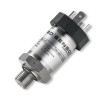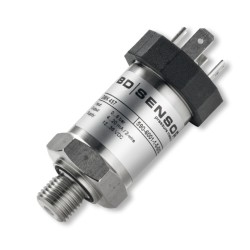
A solutions provider for water treatment systems required a reliable pressure sensor to integrate into a pump control skid. The system was designed to automatically transfer highly corrosive brine from a bulk salt saturator to water softener day tanks. The sensor was needed to monitor the pump’s discharge pressure, providing essential control feedback and operational safety.
- Application: Brine transfer pump control
- Media: Concentrated Saltwater (Brine)
- Pressure Range: 0 to 3 bar gauge
- Key Challenge: High corrosivity of the media, leading to premature failure of standard stainless steel sensors.
A customer designing a pump set for a water treatment application required a pressure sensor to provide control feedback. The specific task involved transferring concentrated brine from a bulk salt saturator to one or more water softener day tanks, a common process in industrial water softening for regeneration cycles. The sensor needed to monitor the pump’s discharge pressure within a 0 to 3 bar gauge range. This signal would be used by a PLC or variable frequency drive to control the pump, protecting it from dead-heading (blockages) or dry-run conditions (loss of prime) while ensuring a consistent supply of brine to the day tanks.
The primary technical challenge in this application was not the pressure range but the highly corrosive nature of the media. Concentrated saltwater (brine) is aggressive towards standard 316L stainless steel, which can suffer from pitting corrosion and premature failure in such chloride-rich environments. A sensor with standard wetted parts would likely have a significantly reduced service life, leading to equipment downtime and increased maintenance.
The solution was a DMK 457 series pressure transmitter, which is specifically designed for demanding marine and offshore environments. The key feature that made this transmitter ideal for the customer’s brine application was the selection of specialized wetted parts. Instead of stainless steel, the sensor was configured with a pressure port machined from a CuNi10Fe1Mn (copper-nickel) alloy. This material is exceptionally resistant to corrosion from seawater and brine, directly addressing the customer’s primary challenge.
Further enhancing its suitability, the DMK 457 series utilizes a robust ceramic Al2O3 diaphragm. This ceramic sensing element is chemically inert, making it immune to the corrosive effects of the brine. It also offers excellent resistance to abrasion, which is beneficial in applications where small, undissolved salt crystals might be present in the media. This combination of a CuNiFe port and a ceramic diaphragm 7 ensures superior long-term stability and reliability compared to a standard metallic sensor.
The transmitter provides the required industrial-standard 4-20mA 2-wire output signal for seamless integration with the pump control system. The specified DIN 43650 (ISO 4400) electrical connector provides an IP65-rated seal, protecting the electrical terminations from moisture and splashes, a common environmental hazard in water treatment pump rooms. While this sensor carries numerous marine-grade certifications such as DNV GL and ABS, its core material and sensor technology translated perfectly to this land-based, corrosive chemical application.

DMK457 Saltwater Resistant Pressure Transmitter
- Pressure Range: 0 to 3 bar
- Range Type: Positive Gauge (atm to +P)
- Output Signal: 4 – 20 mA, 2-wire
- Accuracy: 0.5% FS
- Electrical Connection: DIN-43650 plug IP65 (for 4-6mm cable)
- Process Connection Material: CuNi10Fe1Mn Seawater Compatible (400 bar max. range, G threads only)
- Process Connection: G1/4 DIN3852
- Diaphragm Material: Ceramic Al2O3
- Media Exposed Seals: FKM
